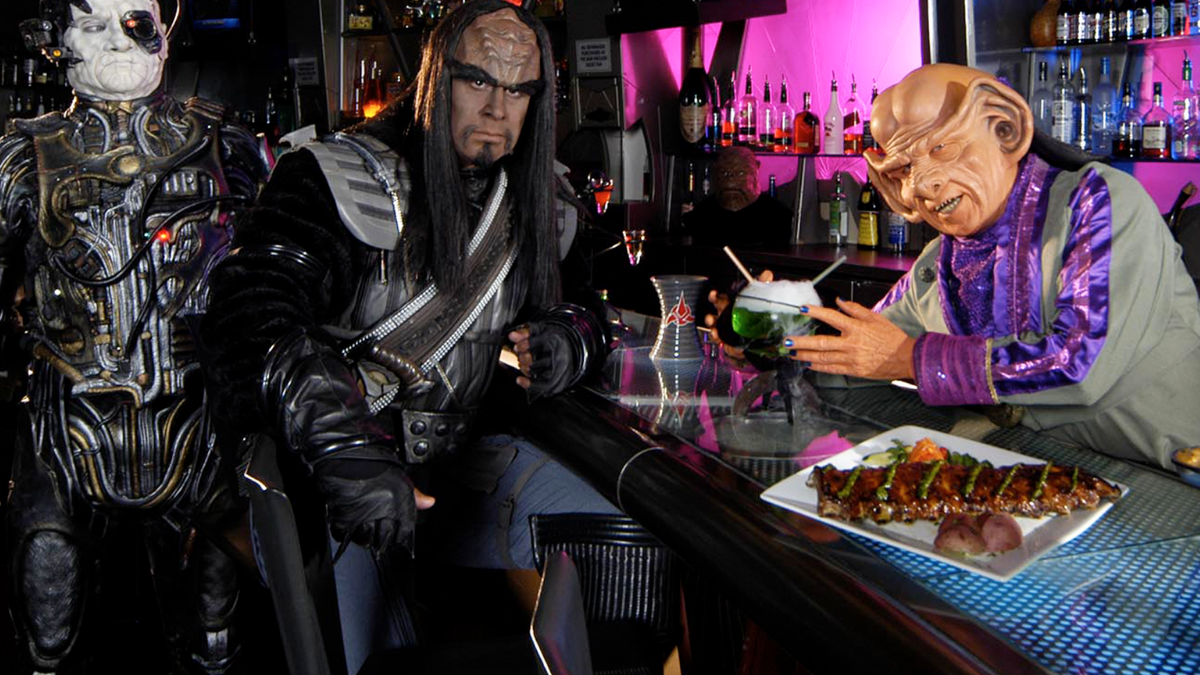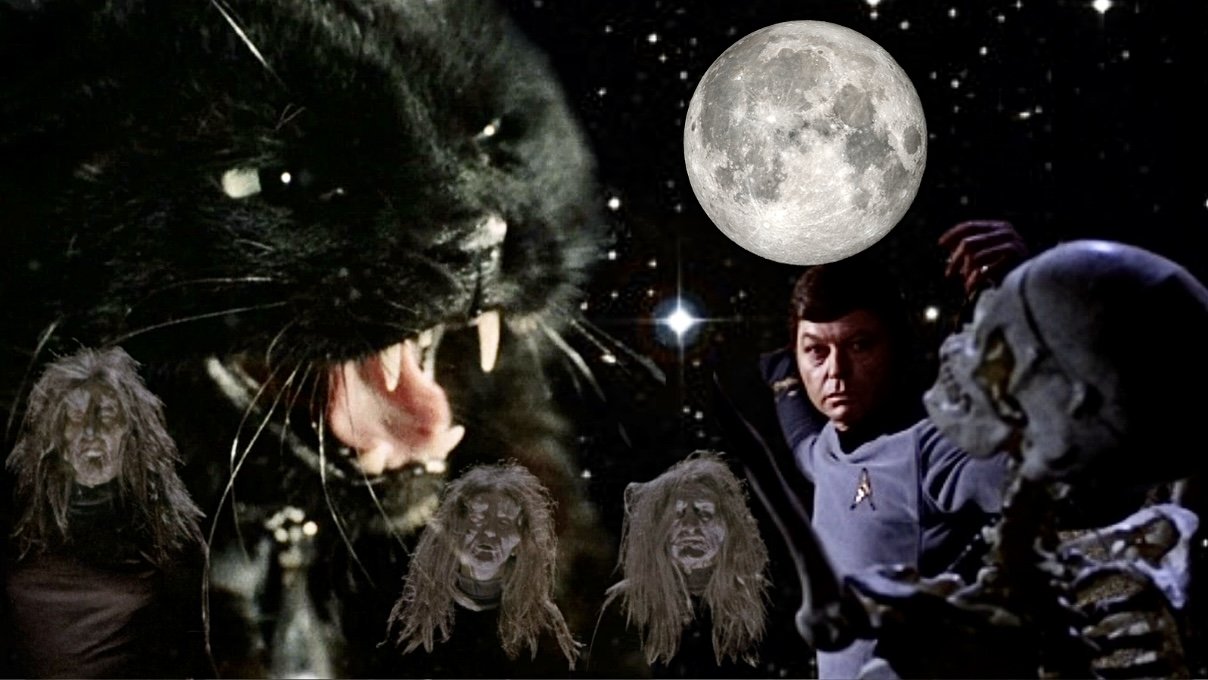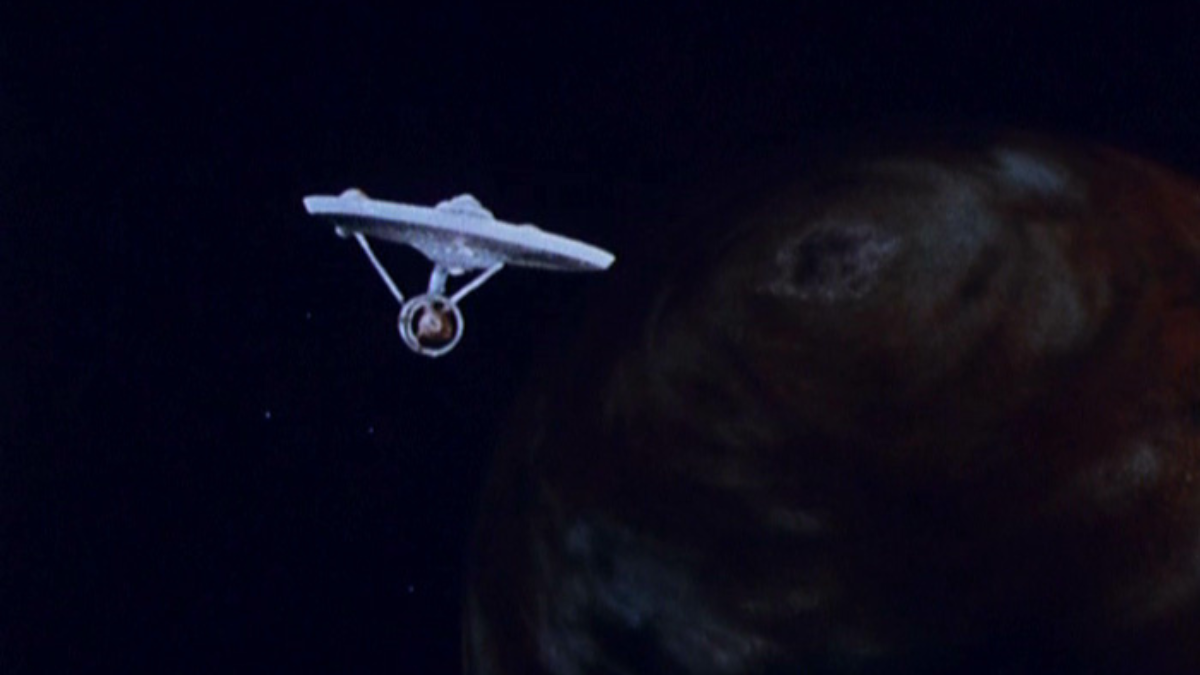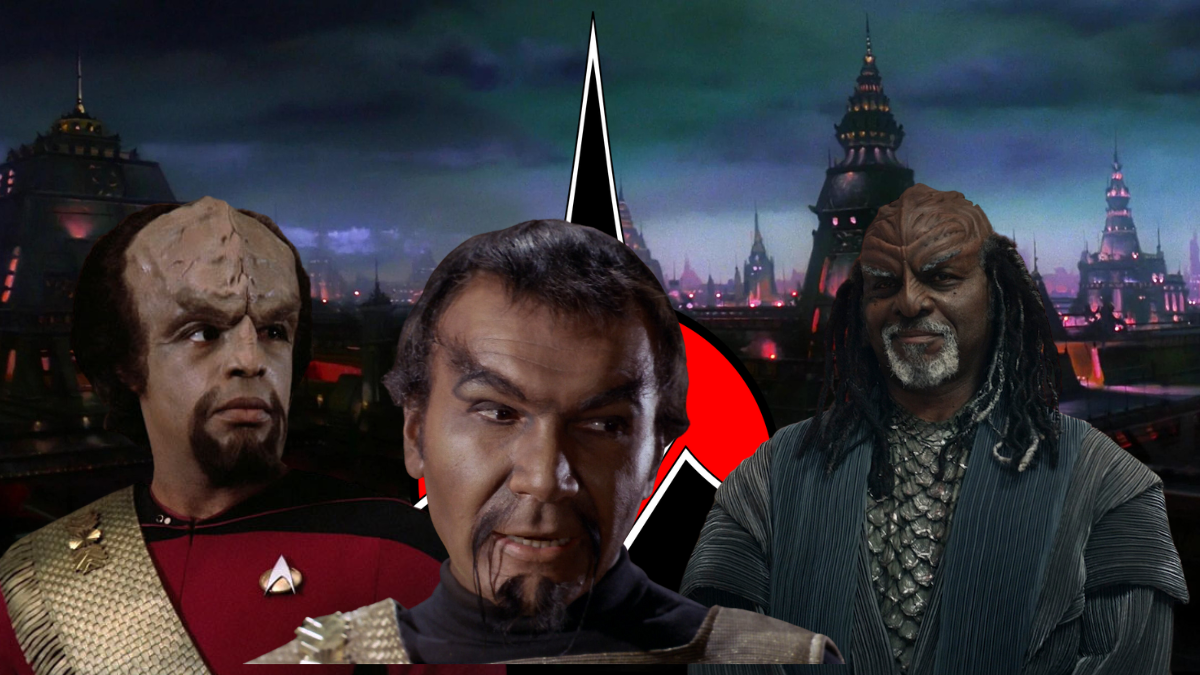Today in Star Trek history: "Errand of Mercy" airs, along with the series' first Klingons

Captains Kirk (William Shatner) and Kor (John Colicos) are prevented from starting a war, much to their chagrin
MARCH 23, 2022 - In 1967, fans of Star Trek meet an alien race that would be part of their universe for 55 years (and counting). Over time, we would learn that their society had a strong sense of honor and tradition. They would becomes allies to the Federation, suffer a brief civil war, and fight alongside Starfleet in the Dominion War. Their defining physical feature was their head ridges, except when they weren’t there, a discrepancy explained by a mutagenic plague that wiped their foreheads clean a hundred years before Kirk and co. (and the audience) met them. But the genesis of the Klingons was much more straightforward than the history of their head ridges. Today we take a look back at Star Trek: The Original Series’ season one episode “Errand of Mercy.”
Star Trek had been picked up by the nextwork for a total of 26 episodes. There was a time when that would make a full season. Today. depending on the network and series, that might be two seasons. But, with only a few days notice, NBC picked up three final episodes for the season. The first one of these, written by Gene Coon, “the fastest typewriter in the West,” was “Errand of Mercy.”
Coon, a producer on the series, prioritized saving money. Money on Trek had always been tight, but with three additional scripts ordered, pinching pennies was a must. Special effects in the episode are limited and the only interior we see on the Enterprise is the bridge, allowing the planet interiors to be built on Stage 9, usually reserved for other ship interiors. McCoy and Scotty are conspicuously missing from the episode, as well, saving on the casting budget, and the village on the planet Organia was written to match an outdoor set already standing on the Desilu lot.
From initial story outline to final draft, the writing of the episode only took a few weeks, fast even for Coon, who had a reputation for churning out excellent scripts in minimal time. It has everything a good Trek script should have: it primarily uses the two most popular characters of the series, Kirk and Spock; the title is inspired by a line from Charles Dickens’ The Life and Adventures of Nicholas Nickleby: “It is an errand of mercy which brings me here. Pray, let me discharge it”; it introduces a mysterious alien race who are hiding a secret behind their friendly smiles; it holds a timely anti-war message; there are alien livestock that look suspiciously like Terran goats spray painted blue-green; oh, yes, and it introduces the Klingons.
“Errand of Mercy” as a whole was an allegory for the ongoing war in Vietnam, with the planet Organia standing in for Vietnam; the Federation as depicted in the script as a substitue for America; and the warlike Klingon Empire was designed to remind viewers of China and its allies. Kirk and Klingon Commander Kor want to make war, not love, and the ruling council of Organia are pacifists to a fault, using their powers to frustrate the enemies’ attempts at violence against one another.
The name Klingon was an homage by series creator Gene Roddenberry to Lieutenant Wilbur Clingan, a fellow officer of his in the Los Angeles Police Department before he became a television writer. With so many cost-cutting measures, creating a complicated look for a new alien species was out of the questions. Hence, using makeup to darken the skin and the addition of some facial hair were all the production could afford to make the Klingons look alien, but for late ‘60s television, it was enough.
When the Klingons appeared in Star Trek: The Motion Picture, Roddenberry wanted to make them seem more alien by adding forehead ridges, touching off a fan debate about how and why they had evolved a different look between the series and the film. The debate was settled temporarily in a Star Trek: Enterprise episode, then was resumed with an excessive fervor when the makeup changed again in Star Trek: Discovery.
But for now, that was all in the distant future, with sequel films and series not even a glint in fans’ eyes. To play the first major Klingon in history, the producers hired John Colicos, a recommendation from episode director John Newland. Colicos himself was the one who came up with the Klingons’ look, suggesting to Makeup Artist Fred Phillips that they look to the past for inspiration from Genghis Khan.
In the episode, Kirk is, perhaps, written a little more bloodthirsty than usual, igniting a Klingon ammunition dump and trying his darndest to get the Organians to fight against their oppressors. In the end, the Organians neither need nor want the Federation’s help to banish the Klingons, mirroring what was happening in Southeast Asia at the time the episode aired. Kirk is ultimately embarrassed at his behavior, being angry at the Organians’ prevention of a war that he didn’t even want.
The Organians would appear again, in prequel series Enterprise’s episode “Observer Effect.” As for the Klingons, they were seen in a further 148 Star Trek episodes and films (not counting Worf’s weekly appearances in Star Trek: The Next Generation and four seasons of Star Trek Deep Space Nine), over almost every series. Starting as an allegory designed to deliver a message, the Klingons have clung on to be one of the franchise’s most recognizable and prolific alien races. Ironic, considering their origin began with a hastily written script, ordered by the network at the last minute. It’s a good bet that they aren’t finished yet, with more Trek series on their way in the near future. Only time will tell how the race will continue to evolve, but it’s certain that fans of the franchise will have lots to talk about when they do return.
Further Reading
T is the Managing Editor for Daily Star Trek News and a contributing writer for Sherlock Holmes Magazine and a Shakespeare nerd. He may have been the last professional Stage Manager to work with Leonard Nimoy, has worked Off-Broadway and regionally, and is the union Stage Manager for Legacy Theatre, where he is currently working with Julie Andrews. after which he’ll be working on Richard III at Elm Shakespeare Company.





